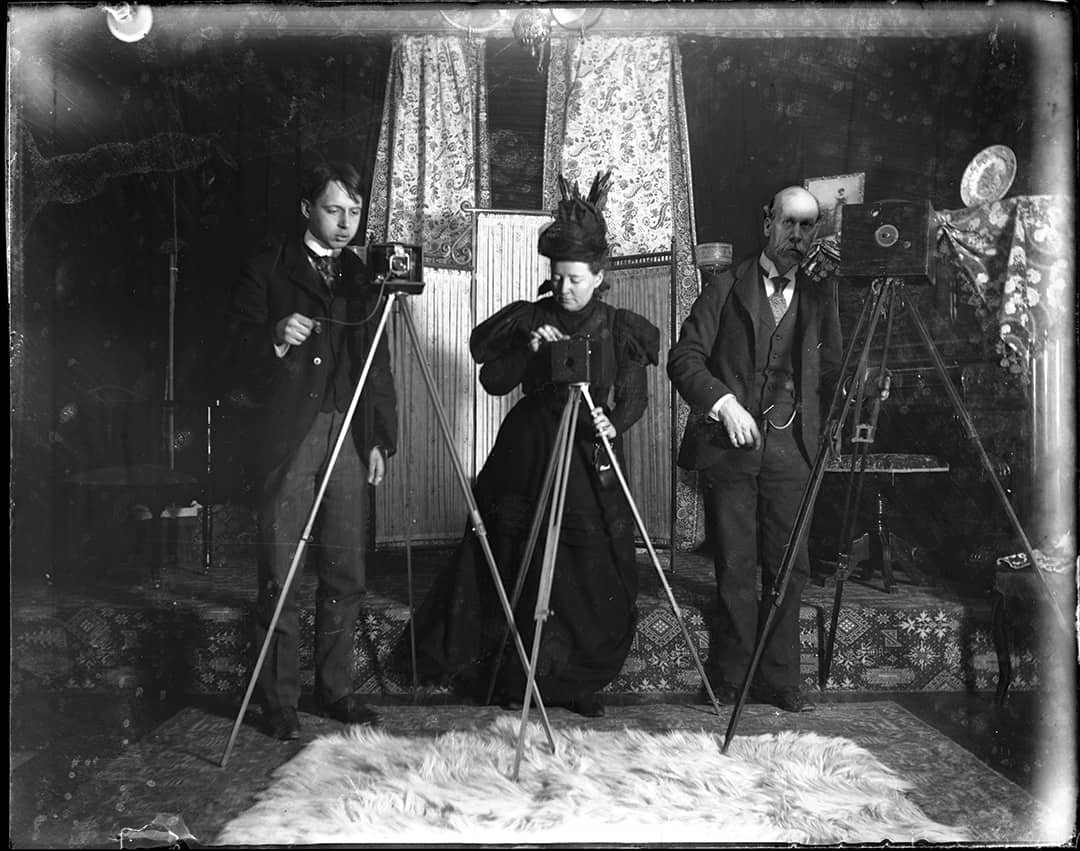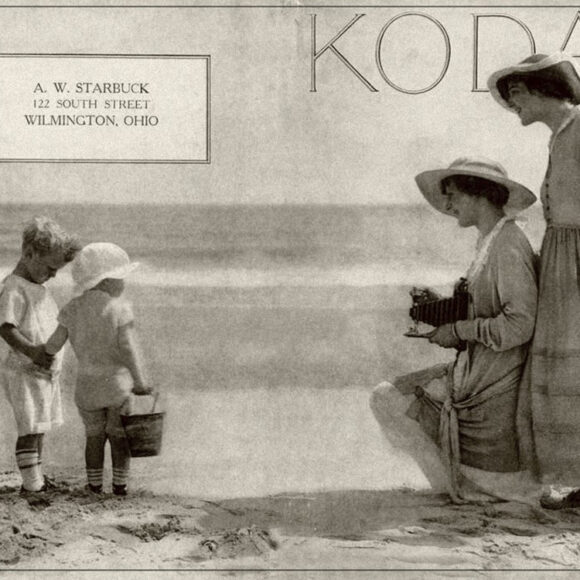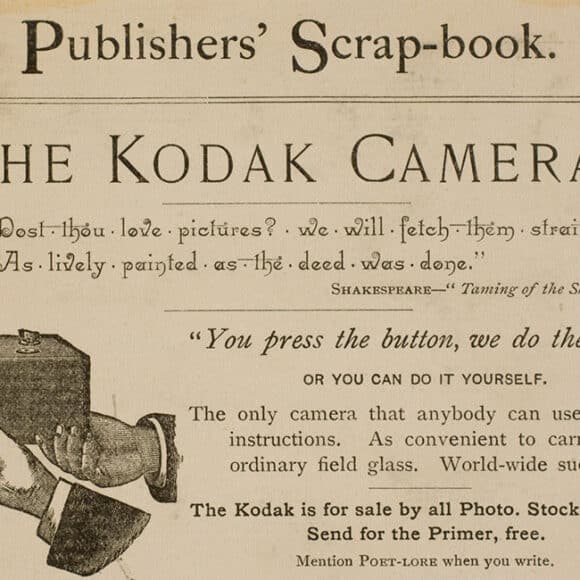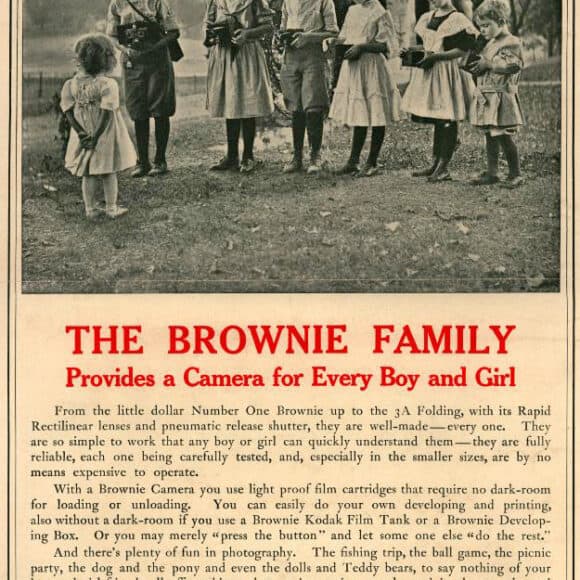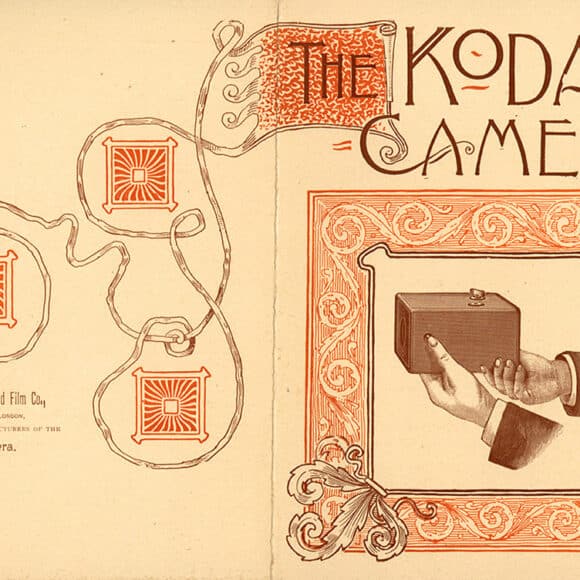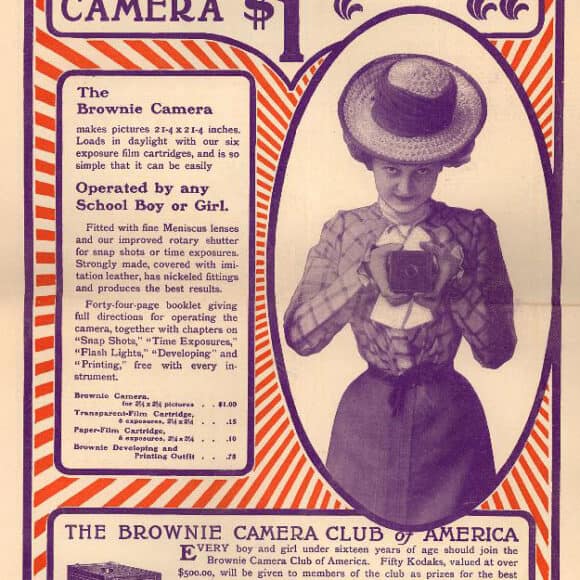SELF AND THE WORLD: EXPERIENCING PHOTOGRAPHY IN 19TH-CENTURY NORWALK
AMATEURS
It wasn’t until the 1870s that the average person could take his or her own photographs. At that time dry plate glass negatives began to be manufactured. Sensitized printing papers followed about a decade later. These commercial products eliminated the trickiest, messiest and most dangerous aspects of photography. However, the serious amateur still needed to convert a closet or bathroom into a temporary darkroom to develop the negatives. Amateurs shared tips and advice in journals and local camera clubs.
 In 1888 Kodak introduced its first camera that allowed anyone to take photographs in a way that required no technical knowledge. The camera came preloaded with negatives on a roll of film. Once exposed, the customer sent the entire camera back for the negatives to be developed and printed. Then Kodak sent the camera back loaded with another roll of film negatives. As Kodak’s famous advertising line read, “You push the button, and we do the rest.”
In 1888 Kodak introduced its first camera that allowed anyone to take photographs in a way that required no technical knowledge. The camera came preloaded with negatives on a roll of film. Once exposed, the customer sent the entire camera back for the negatives to be developed and printed. Then Kodak sent the camera back loaded with another roll of film negatives. As Kodak’s famous advertising line read, “You push the button, and we do the rest.”
At the end of the 19th century, anyone could take their own photographs.


